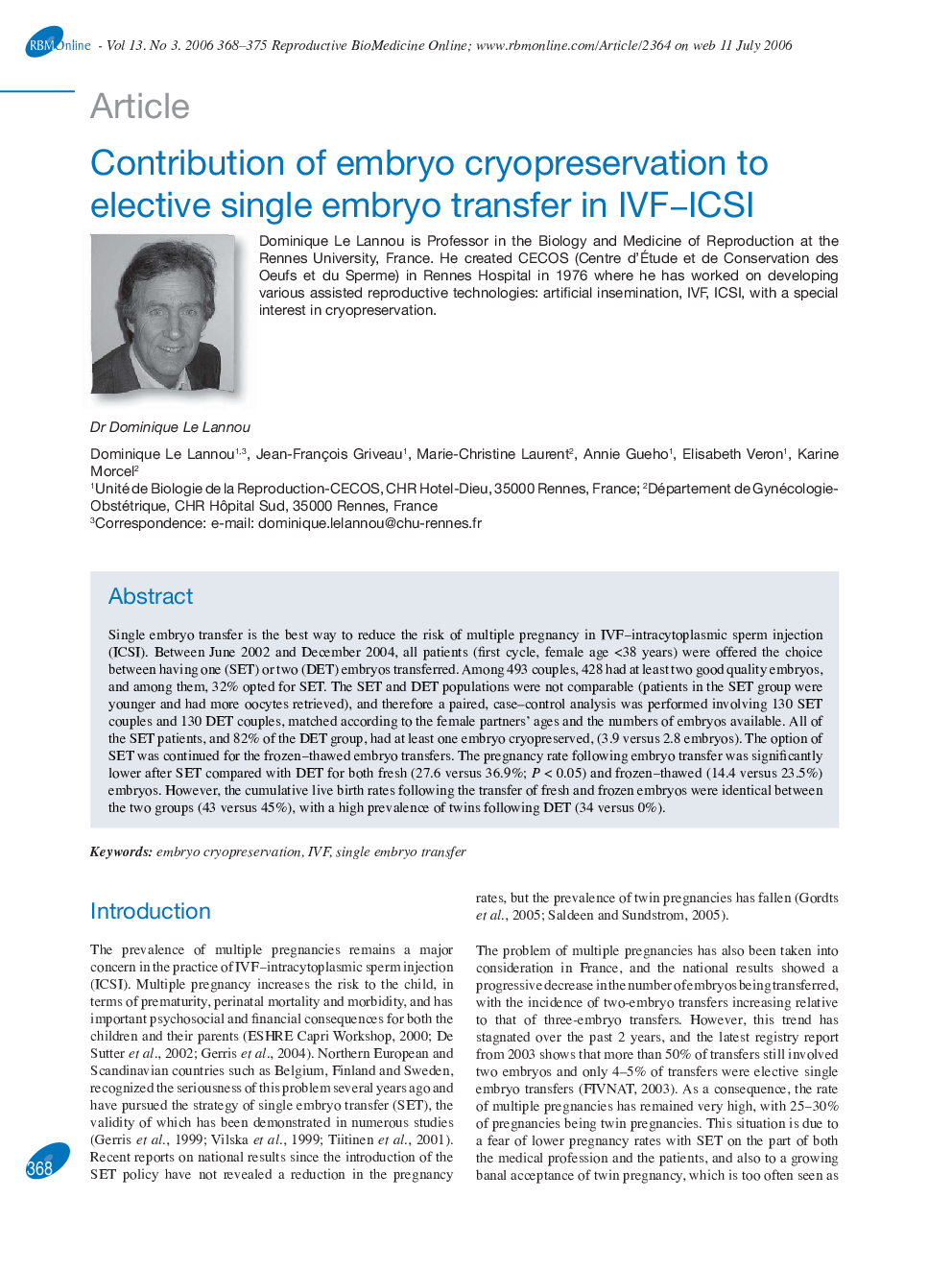| Article ID | Journal | Published Year | Pages | File Type |
|---|---|---|---|---|
| 3971883 | Reproductive BioMedicine Online | 2006 | 8 Pages |
Single embryo transfer is the best way to reduce the risk of multiple pregnancy in IVF-intracytoplasmic sperm injection (ICSI). Between June 2002 and December 2004, all patients (first cycle, female age <38 years) were offered the choice between having one (SET) or two (DET) embryos transferred. Among 493 couples, 428 had at least two good quality embryos, and among them, 32% opted for SET. The SET and DET populations were not comparable (patients in the SET group were younger and had more oocytes retrieved), and therefore a paired, case–control analysis was performed involving 130 SET couples and 130 DET couples, matched according to the female partners' ages and the numbers of embryos available. All of the SET patients, and 82% of the DET group, had at least one embryo cryopreserved, (3.9 versus 2.8 embryos). The option of SET was continued for the frozen–thawed embryo transfers. The pregnancy rate following embryo transfer was significantly lower after SET compared with DET for both fresh (27.6 versus 36.9%; P < 0.05) and frozen–thawed (14.4 versus 23.5%) embryos. However, the cumulative live birth rates following the transfer of fresh and frozen embryos were identical between the two groups (43 versus 45%), with a high prevalence of twins following DET (34 versus 0%).
